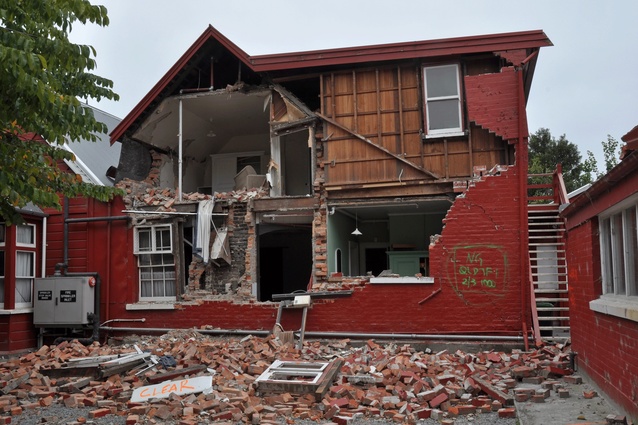Counting costs
One of the most significant changes introduced by insurance companies in 2013 was the move to ‘fixed sum insured’. This replaced the former ‘replacement insurance’ policies that were effectively open ended as homes were simply replaced for whatever it cost. In essence, no cap.

New Zealand homeowners are still converting to fixed sum insurance as their policies come up for renewal. Homeowners now need to specify a replacement cost for the policy. Under this model, the maximum the insurer will pay is the sum agreed to, even if the actual cost of rebuilding turned out to be greater. If the sum insured is set too low, a homeowner may have to rebuild to a lesser size or quality, or pay some of the rebuilding cost themselves.
Understandably, this is happening because insurers need to know their maximum exposure. In the past their exposure was virtually unknown and unable to be calculated. Clearly the Canterbury situation highlighted this issue for them.
I am not going to argue whether insurers should or shouldn’t adopt a fixed sum insured approach. While clearly the old replacement cost policies were better for the homeowner, if a fixed sum insured model is the only type of insurance we can get then so be it.
As homeowners begin to understand this change and switch to the new regime, they have been looking to independent experts to assist them to estimate the replacement cost of their home. Insurance companies have provided online calculators and many builders have been approached to give advice.
However, I have warned our members against giving such advice because providing it is a trap for the unwary. It should be left to those who have the proper insurance protections in place such as valuers and quantity surveyors etc. What seems an innocent enough request is a mine field.
When determining the fixed sum insured it is not as simple as just deciding how much it would cost to replace the home today. That is the easy part. It is not today’s replacement cost you have to worry about its tomorrow’s. You have to think forward and work through the various implications and events that might impact on your assessment.
For example, firstly, you have to assume there is a loss on the last day of the insurance period i.e. 365 days after the fixed sum insured replacement cost was locked in. If that occurs there has already been 12 months’ worth of inflation that needs to be covered, and that is just the beginning. Should that happen there will be further time extensions before the rebuild is actually undertaken as one has to go through the claims process, demolish the existing dwelling (at a potential cost if not covered in the policy), obtain resource and building consents, and tenders before building gets underway.
Depending on the type of house this could take another year, perhaps longer if it is a large complex home. So you may have to allow another 18 months (or more) of inflation on top of the first 12 months. These inflationary costs are not CPI costs but measured on the construction cost index, which can vary from the CPI. Furthermore, these costs compound annually akin to interest calculations. Rebuild timelines can be further influenced by the claim circumstances. If it is a straight forward, one-off event (e.g. a house fire) then your rebuild time estimate will differ from a claim that was made as a result of a large disaster such as Christchurch.
In the case of the latter, it may be years before the rebuild happens. Imagine if a fixed sum insured was set on 5 September 2009 in Christchurch (the 2010 quake was on 4 September 2010 – the last day of the insurance period) and no inflationary provisions were included in the replacement cost or policy. With the rebuild potentially still two or three years away it could be as many as seven years’ worth of construction cost increases on top of the original 2009 assessment.
If the homeowner does not elect a replacement figure some insurance companies have a default amount of $2000 per square metre based on a house of 200-220m2. This may not seem too bad to the average homeowner. For comparison’s sake let’s say it does cost $2000 per square metre to rebuild a home today, and that figure is the fixed sum insured amount. The insurance period runs for 12 months and you have a loss on day 365.
Assuming no inflationary provisions have been included in the $2,000 and it takes another 18 months to rebuild, the $2000 per square metre (at 3.5 per cent compounded per annum national construction cost index) is now $2200 per square metre.
But, if a claim formed part of a large natural disaster (such as Christchurch) it could be five or six years before any rebuild got underway, and we know that the construction cost index in Canterbury has been about 10 per cent for the last few years. If that continues even at five per cent for the next two years, after five years the $2000 per square metre has risen to $2935 per square metre. This does not take into account demolition costs or other unknowns that may eventuate.
So, if homeowners are caught underinsured they will be forced to ‘cash out’ and start rebuilding as quickly as possible. The trouble is, everyone else who finds themselves short will be doing the same. They will also be looking for ‘damages’ for being under insured from those who provided the estimates or advice in the first place.
I am concerned New Zealand is under insured. I am also concerned that property owners are not being told about the potential risks, and therefore cannot make informed choices. It is likely to take some time before New Zealanders appreciate that we are potentially under insured as a nation. In fact, it might take a court case or two to reinforce that view.











